Thingiverse

Eddy Current Brake for Vernier DTS Carts by vernier
by Thingiverse
Last crawled date: 3 years ago
An eddy current brake is a non-contact braking system, most commonly used in trains and roller coasters. In an eddy current brake, magnets are used to induce eddy currents in a metal rotor or other metal part of the vehicle. According to Lenz’s Law, those induced currents create a magnetic field opposing the original field. The two opposing magnetic fields work to slow the vehicle, rather than applying a frictional force like a traditional braking system.
Chris Gaffney and Adam Catching’s article “Magnetic Viscous Drag for Friction Labs” in the Sept. 2016 edition of The Physics Teacher describes their investigation into eddy current braking. As an alternative to a traditional friction lab, their students slid magnets down a long aluminum ramp, slowed by the eddy currents they induced in the ramp.
As a company that sells a lot of aluminum tracks and magnets, it seemed natural to try it out ourselves. We designed and 3D-printed a simple magnet holder for our DTS carts. It holds up to 4 magnets about 2 mm off the surface of the dynamics track.
The attached graph shows the velocity of a DTS cart rolling on an inclined track, with either the eddy current brake (zero, two, or four magnets) or our Friction Pad installed. With zero magnets, the cart’s velocity increases linearly, as expected. With the Friction Pad installed on the cart, the velocity curve is similarly linear, albeit with a shallower slope.
The shape of the velocity curve differs when the eddy current brake is installed. As expected, the induced drag on the cart increases with the number of magnets installed. It is also apparent that the nature of the eddy current braking force is different than simple kinetic friction. For example, it appears that with four magnets installed, the cart reaches a terminal velocity in the four seconds shown.
Chris Gaffney and Adam Catching’s article “Magnetic Viscous Drag for Friction Labs” in the Sept. 2016 edition of The Physics Teacher describes their investigation into eddy current braking. As an alternative to a traditional friction lab, their students slid magnets down a long aluminum ramp, slowed by the eddy currents they induced in the ramp.
As a company that sells a lot of aluminum tracks and magnets, it seemed natural to try it out ourselves. We designed and 3D-printed a simple magnet holder for our DTS carts. It holds up to 4 magnets about 2 mm off the surface of the dynamics track.
The attached graph shows the velocity of a DTS cart rolling on an inclined track, with either the eddy current brake (zero, two, or four magnets) or our Friction Pad installed. With zero magnets, the cart’s velocity increases linearly, as expected. With the Friction Pad installed on the cart, the velocity curve is similarly linear, albeit with a shallower slope.
The shape of the velocity curve differs when the eddy current brake is installed. As expected, the induced drag on the cart increases with the number of magnets installed. It is also apparent that the nature of the eddy current braking force is different than simple kinetic friction. For example, it appears that with four magnets installed, the cart reaches a terminal velocity in the four seconds shown.
Similar models
thingiverse
free
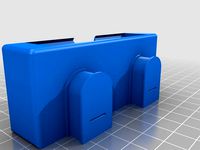
Extra mass tray for Vernier DTS cart by vernier
...eir place, much like the dts friction pad.
have something you'd like to attach to a dts cart? take this design and modify it!
grabcad
free

Electromagnetic Brakes
...gnet is not energized, the velocity of the disc is free and accelerates
uniformly.
the principle is based on faraday-lenz theory.
grabcad
free

Eddy current separator for non-ferrous metal separation
...conductive ones. separation is a result of the combined actions of several
forces (electrodynamic, gravitational and frictional).
3dwarehouse
free

Self-sustaining Electric Motor
... electric motor, it can be used as power supply – electric generator (the disk current). #electric_motor #generator #motor #power
3dwarehouse
free

Eddy current brake
...eddy current brake
3dwarehouse
eddy current brake
grabcad
free

brake disc
... brake that slows rotation of the wheel by the friction caused by pushing brake pads against a brake disc with a set of calipers.
grabcad
free

Electromagnetic brake
...c brake
grabcad
electromagnetic brakes slow or stop motion using electromagnetic force to apply mechanical resistance (friction)
grabcad
free

DISC BRAKE
...brake which slows rotation of the wheel by the friction caused by pushing brake pads against a brake disc with a set of calipers.
grabcad
free

Brake disc
...brake which slows rotation of the wheel by the friction caused by pushing brake pads against a brake disc with a set of calipers.
grabcad
free

Electromagnetic brake
...netic brakes or em brakes are used to slow or stop vehicles using electromagnetic force to apply mechanical resistance (friction)
Vernier
3d_export
$20
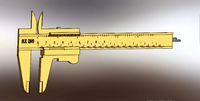
vernier calipper
...vernier calipper
3dexport
vernier cvalipper made as real, exactly scale
3d_export
$7

vernier caliper
... measurement uncertainty by using vernier acuity to reduce human estimation error.<br>please recount polygons and vertices.
turbosquid
$5

Vernier Caliper
...lty free 3d model vernier caliper for download as 3ds and obj on turbosquid: 3d models for games, architecture, videos. (1604280)
turbosquid
$40
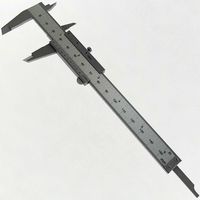
Vernier Caliper
...ee 3d model vernier caliper for download as 3ds, max, and obj on turbosquid: 3d models for games, architecture, videos. (1298113)
turbosquid
$15

Vernier caliper
... 3d model vernier caliper for download as ige, obj, and sldas on turbosquid: 3d models for games, architecture, videos. (1227110)
3d_ocean
$12

vernier caliper
...9. scene contains 4583 vertex and 4319 faces, textures and materials. the rendering and materials, are set with vray adv 2.10.01.
cg_studio
$30

Vernier Caliper3d model
... model
cgstudio
.3ds .max .obj .wrl - vernier caliper 3d model, royalty free license available, instant download after purchase.
3d_export
$30
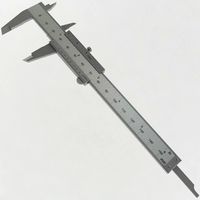
Vernier Caliper 3D Model
... metalworking mechanical engineering textures materials photorealistic detailed
vernier caliper 3d model plutonius 33146 3dexport
turbosquid
$1

6" Vernier Calipers
... available on turbo squid, the world's leading provider of digital 3d models for visualization, films, television, and games.
3d_export
$10

digital vernier caliber
...digital vernier caliber
3dexport
texture details:<br>contact me if you need any help. thank you.
Eddy
3ddd
$1

eddy chair
...eddy chair
3ddd
camerich , eddy
camerich eddy chair
turbosquid
$80

Eddie
... available on turbo squid, the world's leading provider of digital 3d models for visualization, films, television, and games.
3d_export
$5

eddie iron maiden
...eddie iron maiden
3dexport
eddie iron maiden scult
turbosquid
$10

Eddie the manager
...
royalty free 3d model eddie the manager for download as max on turbosquid: 3d models for games, architecture, videos. (1344924)
design_connected
$16

Eddy Ray Rug
...eddy ray rug
designconnected
exquisite rugs eddy ray rug computer generated 3d model.
3d_export
$10

flexform eddy
...flexform eddy
3dexport
flexform eddy formats:<br>3d max 2018<br>3d max 2015<br>obj rar
cg_studio
$69

Eddie Murphy3d model
...eddie murphy3d model
cgstudio
.max - eddie murphy 3d model, royalty free license available, instant download after purchase.
3d_export
$30

robot eddie
...robot eddie
3dexport
3ds max 2014+obj render: corona unvrapuvw texture: 4096x4096
turbosquid
$2

eddie Iron Maiden
...model eddie iron maiden for download as ma, tif, obj, and fbx on turbosquid: 3d models for games, architecture, videos. (1213866)
3ddd
$1

Cousin Eddie bench (на перезаливку)
...банкетка cousin eddie от jory brigham, другое название fast freddy ...
Dts
3ddd
$1

DT-88152
...dt-88152
3ddd
карниз
карниз
3ddd
$1

DT-9813
...dt-9813
3ddd
карниз
карниз
3ddd
$1

DT-36
...dt-36
3ddd
карниз
карниз
3ddd
$1

DT-88161
...dt-88161
3ddd
карниз
карниз
3ddd
$1

DT-9802
...dt-9802
3ddd
карниз
карниз
turbosquid
$79

DT-75
... available on turbo squid, the world's leading provider of digital 3d models for visualization, films, television, and games.
turbosquid
$45

Dt-70
... available on turbo squid, the world's leading provider of digital 3d models for visualization, films, television, and games.
3d_export
$20

DT - 75 3D Model
...dt - 75 3d model
3dexport
dt 75 soviet ussr crawler tractor farming dt75
dt - 75 3d model harrierii 101271 3dexport
turbosquid
$10

ROBOT DT(1)
...urbosquid
royalty free 3d model robot dt for download as obj on turbosquid: 3d models for games, architecture, videos. (1172562)
3ddd
$1

GORENJE DT 6 SYW
...gorenje dt 6 syw
3ddd
gorenje , вытяжка
вытяжка gorenje dt 6 syw
Brake
3d_export
$5
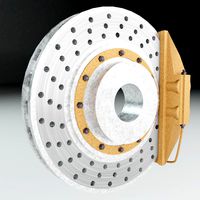
brake
...brake
3dexport
brake disk
turbosquid
$2
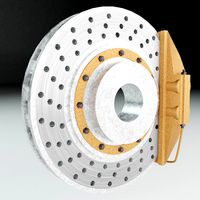
Brake
... free 3d model brake for download as blend, fbx, obj, and stl on turbosquid: 3d models for games, architecture, videos. (1600351)
turbosquid
$19

Brakes
... available on turbo squid, the world's leading provider of digital 3d models for visualization, films, television, and games.
turbosquid
$9

brake
... available on turbo squid, the world's leading provider of digital 3d models for visualization, films, television, and games.
turbosquid
$7

Brake
... available on turbo squid, the world's leading provider of digital 3d models for visualization, films, television, and games.
turbosquid
free

brake
... available on turbo squid, the world's leading provider of digital 3d models for visualization, films, television, and games.
3d_export
$5

muzzle brake
...muzzle brake
3dexport
muzzle brake for large-caliber. not a real sample.
3d_export
$22

Brakes 3D Model
...brakes 3d model
3dexport
brakes disc support ventilated caliper brake disk wheel
brakes 3d model bayazoff 30362 3dexport
3d_export
$15
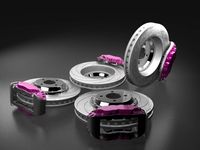
Brakes 3D Model
...brakes 3d model
3dexport
brake disk support caliper
brakes 3d model mackandco 33574 3dexport
3d_export
$10

brake-disc-brembo
...brake-disc-brembo
3dexport
brake-disc-brembo
Current
turbosquid
$25

current tower
... available on turbo squid, the world's leading provider of digital 3d models for visualization, films, television, and games.
3d_export
$30

Current transformer 3D Model
...former 3d model
3dexport
gas-insulated sf6 high-voltage current transformer
current transformer 3d model rostislav 86138 3dexport
turbosquid
$20
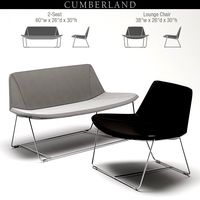
Cumberland Current Lounge
...d model cumberland current lounge for download as max and fbx on turbosquid: 3d models for games, architecture, videos. (1260891)
turbosquid
$20

Cumberland Current stools
...d model cumberland current stools for download as max and fbx on turbosquid: 3d models for games, architecture, videos. (1260857)
3d_export
$5

direct current motor
...direct current motor
3dexport
turbosquid
$20
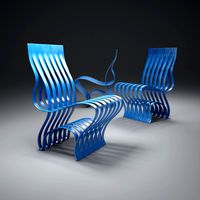
Blue-Current-Chair
... available on turbo squid, the world's leading provider of digital 3d models for visualization, films, television, and games.
turbosquid
$16
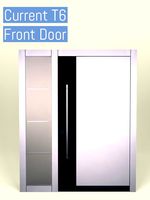
Current Front Door D6
...model current front door d6 for download as max, c4d, and fbx on turbosquid: 3d models for games, architecture, videos. (1294332)
turbosquid
$16
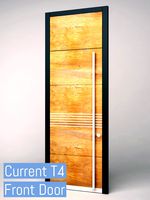
Current Front Door D4
...model current front door d4 for download as max, c4d, and fbx on turbosquid: 3d models for games, architecture, videos. (1291689)
turbosquid
$16

Current Front Door D2
...model current front door d2 for download as max, c4d, and fbx on turbosquid: 3d models for games, architecture, videos. (1291684)
turbosquid
$16

Current Front Door D1
...model current front door d1 for download as max, c4d, and fbx on turbosquid: 3d models for games, architecture, videos. (1291682)
Carts
archibase_planet
free

Cart
...cart
archibase planet
cart small cart hand-cart
cart f1823 - 3d model for interior 3d visualization.
archibase_planet
free
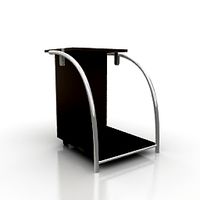
Cart
...cart
archibase planet
cart small cart hand-cart
cart f1507 - 3d model for interior 3d visualization.
archibase_planet
free

Cart
...cart
archibase planet
library cart small cart hand-cart
library cart - 3d model for interior 3d visualization.
archibase_planet
free

Cart
...
archibase planet
cart trolley small cart hand-cart handcart
cart n220411 - 3d model (*.gsm+*.3ds) for interior 3d visualization.
archibase_planet
free

Cart
...cart
archibase planet
cart trolley small cart
cart n060712 - 3d model (*.gsm+*.3ds) for interior 3d visualization.
archibase_planet
free

Cart
...cart
archibase planet
cart shopping cart trolley
cart n250113 - 3d model (*.gsm+*.3ds) for interior 3d visualization.
archibase_planet
free
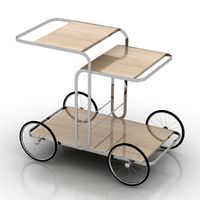
Cart
...cart
archibase planet
cart hand-cart dinner wagon handcart
cart - 3d model (*.gsm+*.3ds) for interior 3d visualization.
archibase_planet
free
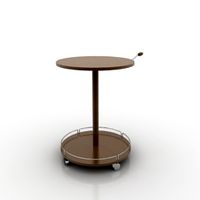
Cart
...cart
archibase planet
small cart hand-cart handcart
cart fe0876 - 3d model (*.gsm+*.3ds) for interior 3d visualization.
3d_export
$6

the cart
...the cart
3dexport
a cart for animals or people.
3d_export
$10

The cart
...the cart
3dexport
cart with logs. divided into parts
